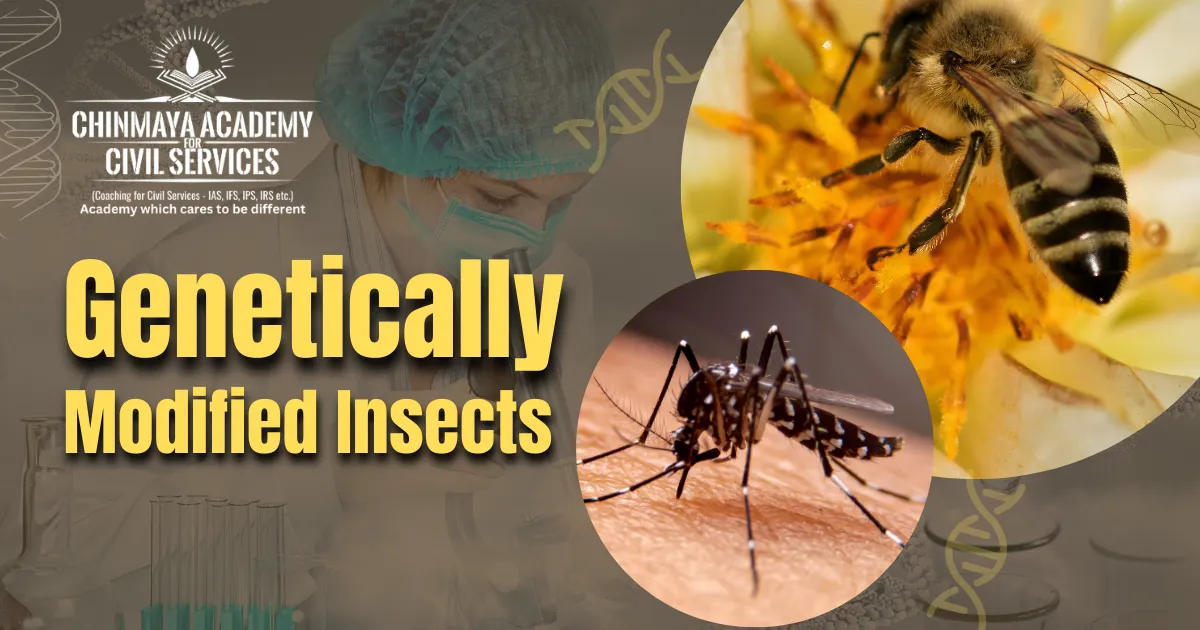
Today India’s bioeconomy contributes 2.6% to the GDP but it is envisioned to contribute about 5% by 2030. To achieve this growth, the sector needs
- Robust policies that create an ecosystem of innovation and industrial action
- Need for government funding for biotechnology in India
- Need for extended efforts to attract private funding in biotechnology research and development
Genetically Engineered Insects
A genetically modified insect are insects whose DNA has been altered using genetic engineering techniques.
Envisioned benefits of GE insects:
- vector management in human and livestock health
- management of major crop insect pests
- improvement of human health and the environment through reduced use of chemicals
- production of proteins for healthcare purposes
- genetic improvement of beneficial insects like engineering honey bees to make better-quality honey and GE silkworms which produce finer and cheaper silk.
- uplifting the standard of living by reducing disease burden, enabling food security and conserving the environment.
Guidelines for Genetically Engineered (GE) Insects
Earlier this year, the Department of Biotechnology (DBT) issued the ‘Guidelines for Genetically Engineered (GE) Insects’ which provided a procedural roadmap for creating GE insects in India.
Few uncertainties pointed out in the guidelines are:
1. The guidelines note that GE insects are becoming globally available but don’t specify the purposes for which GE insects may be approved in India.
2. The guidelines are applicable only to research. It does not deal with confined trials or deployment. This poses a risk as once deployed, GE insects can’t be recalled. There is no clarity on whether deployment of GE insects will be approved and what criteria it might use.
3. The guidelines offer standard operating procedures for GE mosquitoes, crop pests, and beneficial insects but does not define the term ‘beneficial’. Genetic engineering carries the risk of creating unintentionally generate malicious products, create bioweapons. The new guidelines don’t sufficiently account for such negative possibilities.
Consequences of GE insects
- Insects are a major source of food in many ecosystems. Altering their populations can risk the lives of several species and may have unprecedented environmental consequences.
- Genetic engineering is a complex process hence changes in the targeted genes may express unexpected physiological and behavioural effects on the insect.
- There is the risk of the modified genes entering the wild gene pool and leading to unintended consequences.
- Creating a regulatory framework ensuring both safety and effectiveness can be challenging.
- Ensuring cost-effectiveness and scalability for large-scale applications is yet another ongoing challenge.
 Chinmaya IAS Academy – Current Affairs Chinmaya IAS Academy – Current Affairs
Chinmaya IAS Academy – Current Affairs Chinmaya IAS Academy – Current Affairs
